Event-Driven Microservices, the Sense, the Non-sense and a Way Forward - Allard Buijze (https://www.youtube.com/watch?v=jrbWIS7BH70)
Why microservices
 monolith that is well-structured, can scale as well
monolith that is well-structured, can scale as well
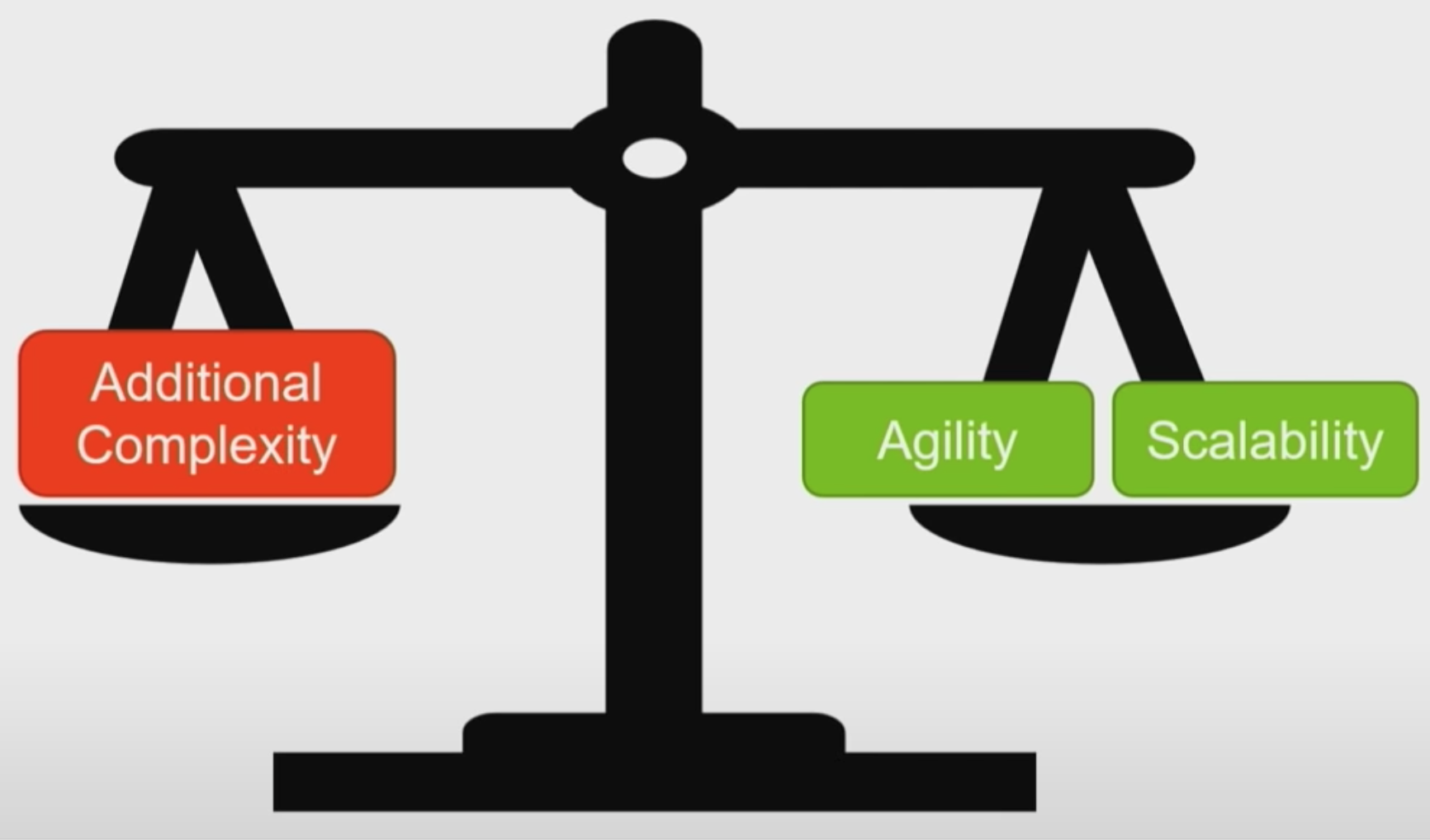
What goes in one service? What goes in another?

order customer product inventory
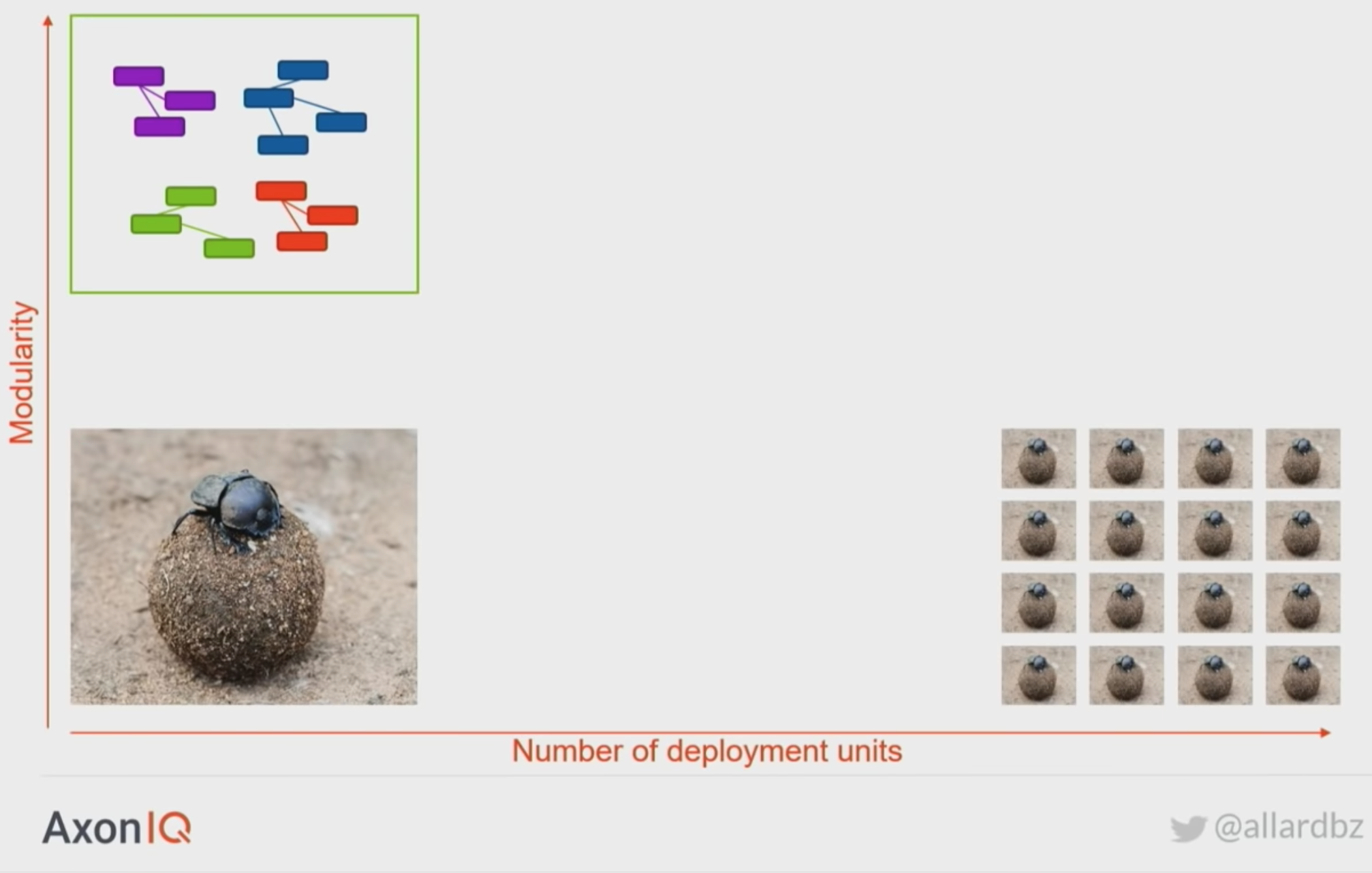 Are you micro-pile-of-shit?
- redeploy multiple services at one
- strong dependencies on other service before you can do something
Are you micro-pile-of-shit?
- redeploy multiple services at one
- strong dependencies on other service before you can do something
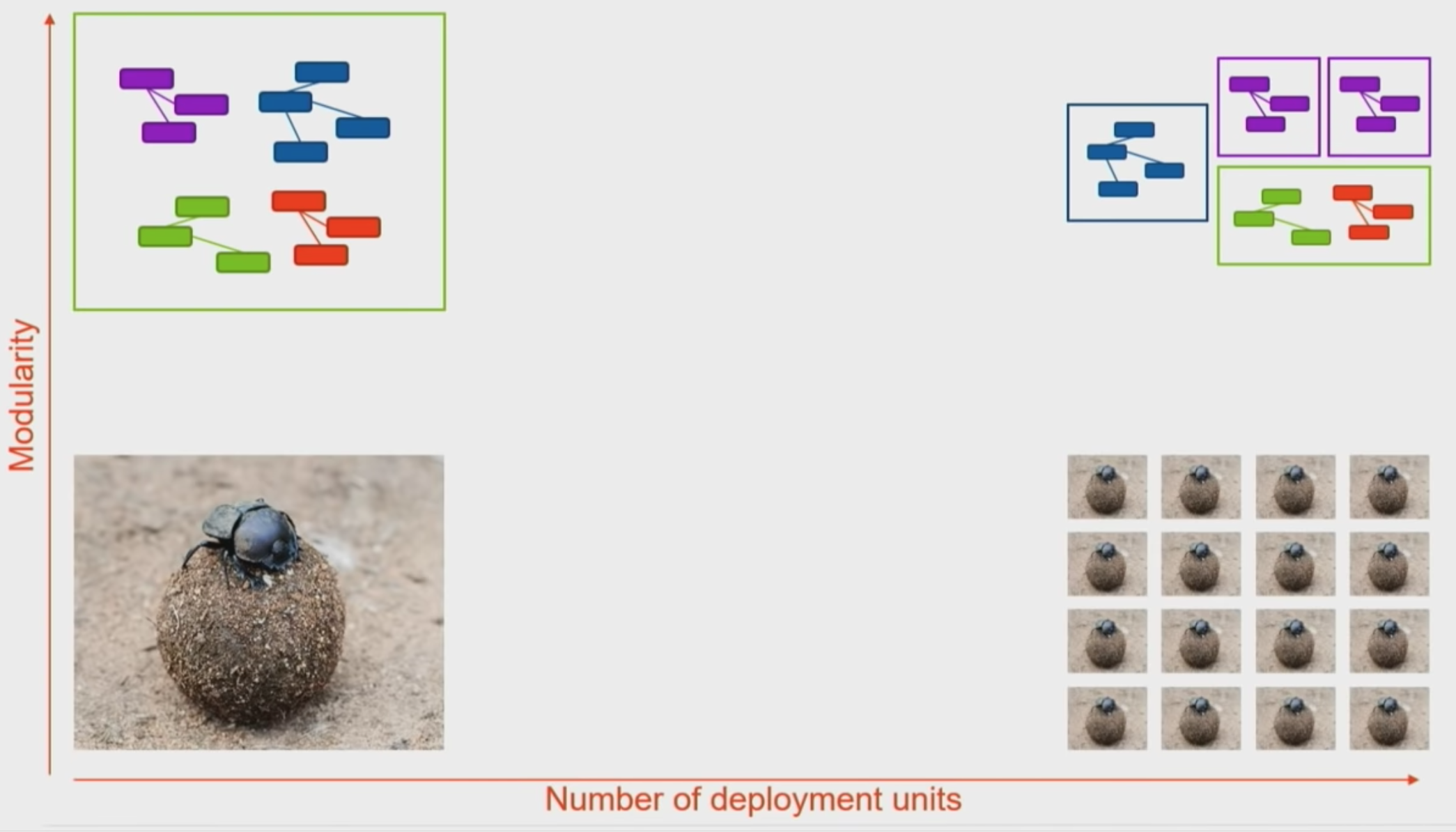 “just go up, and then go right”
“just go up, and then go right”
anti-modularity forces
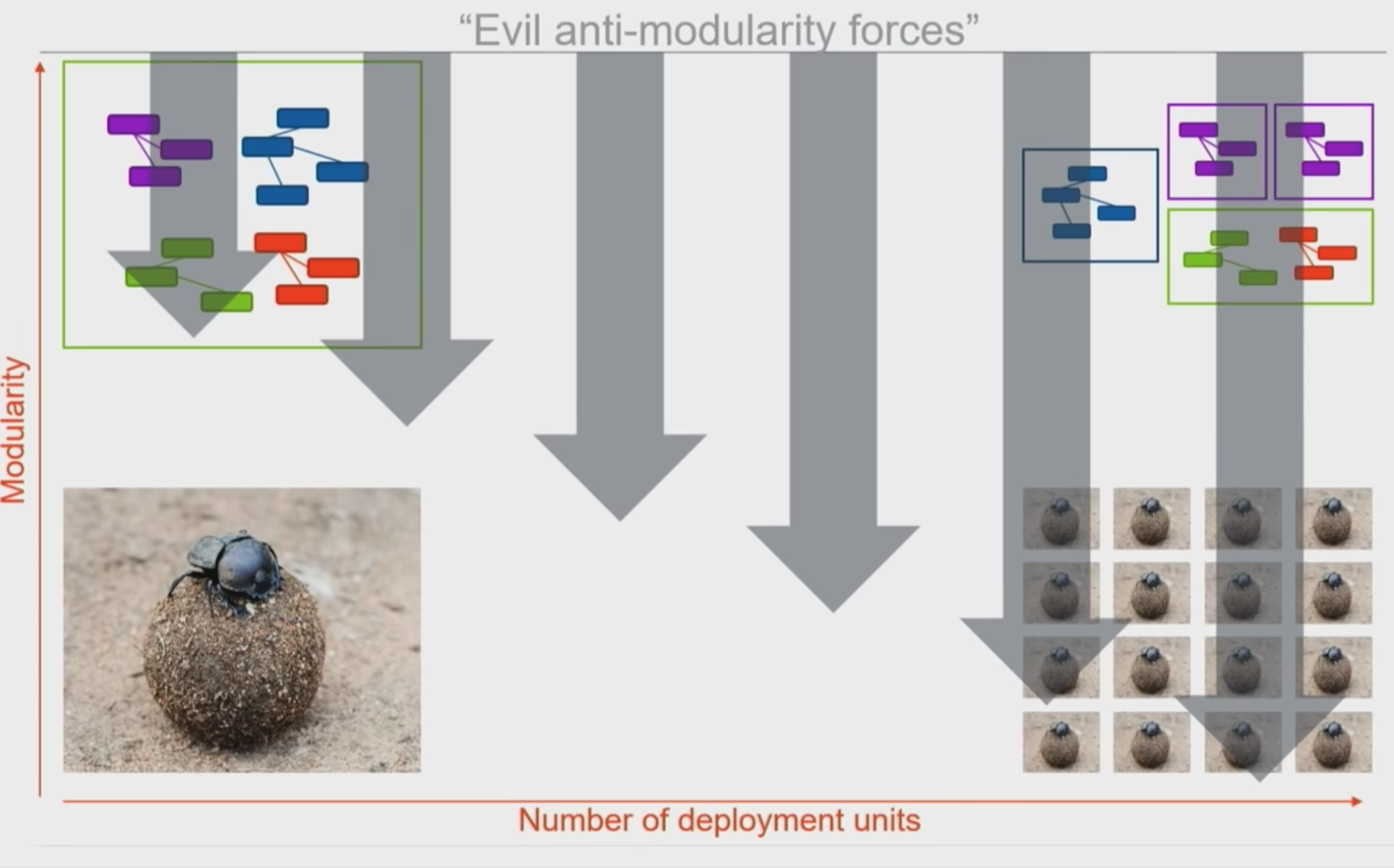 suit & tie telling you “the deadline shifted”
technical debt
suit & tie telling you “the deadline shifted”
technical debt
 """
it’s all about discipline
if you can’t wax a car, forget about karate
If you can’t build a monolith, forget about microservices
"""
"""
it’s all about discipline
if you can’t wax a car, forget about karate
If you can’t build a monolith, forget about microservices
"""
there is a journey towards microservices
- build monolith
- compnents
- split off services => non-functional requirements
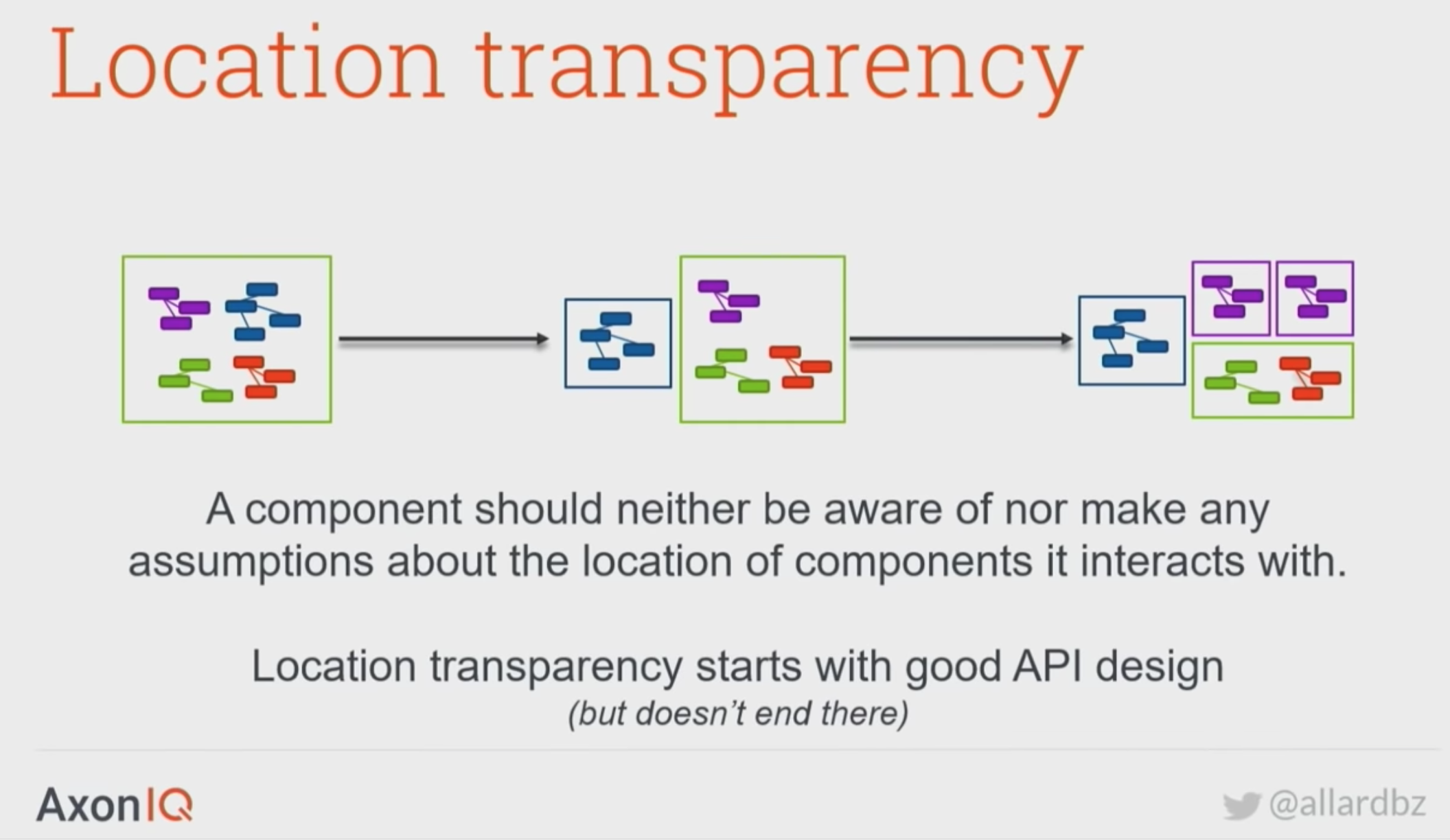 assume components are not on the same deployment
assume components are not on the same deployment
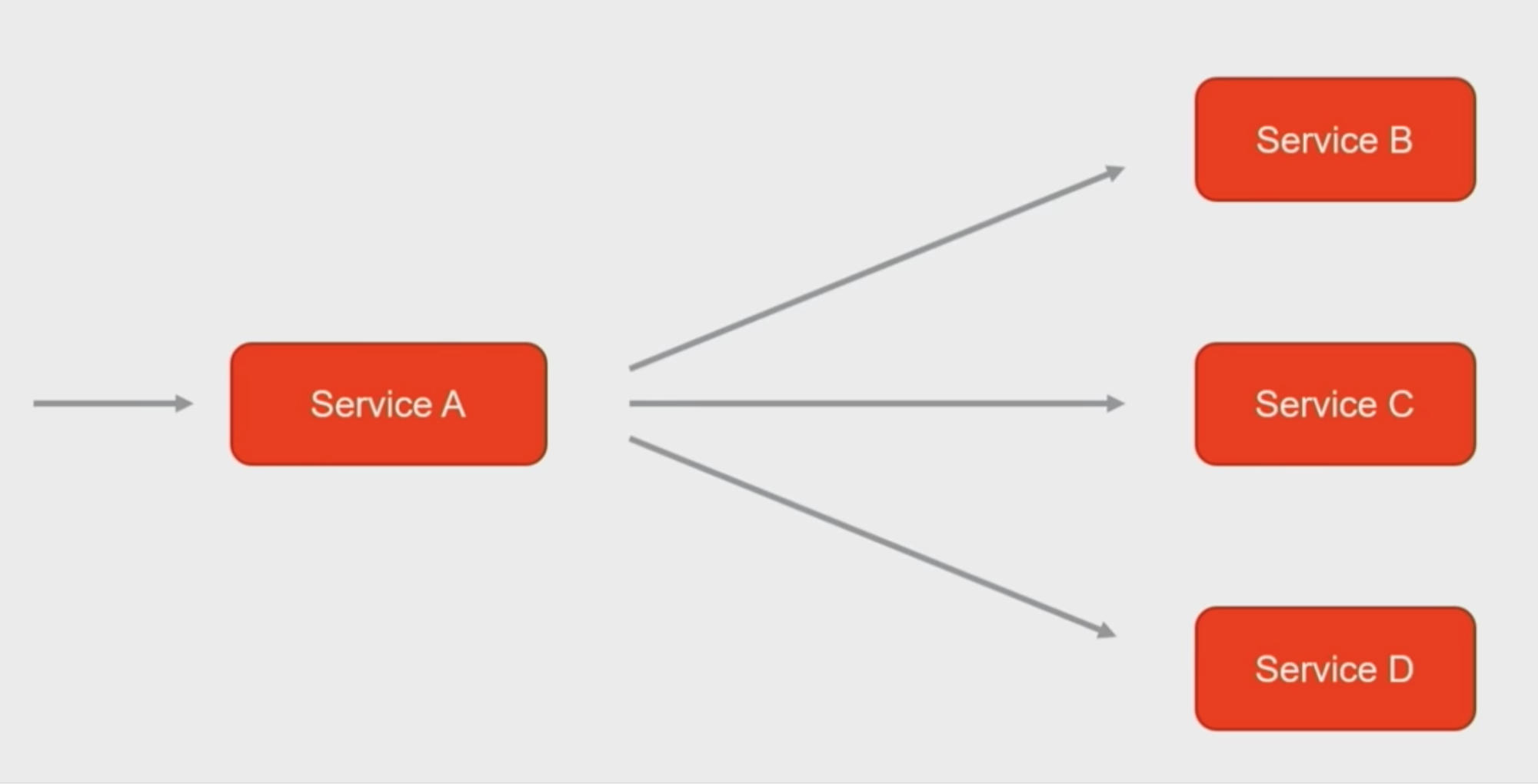
inverted
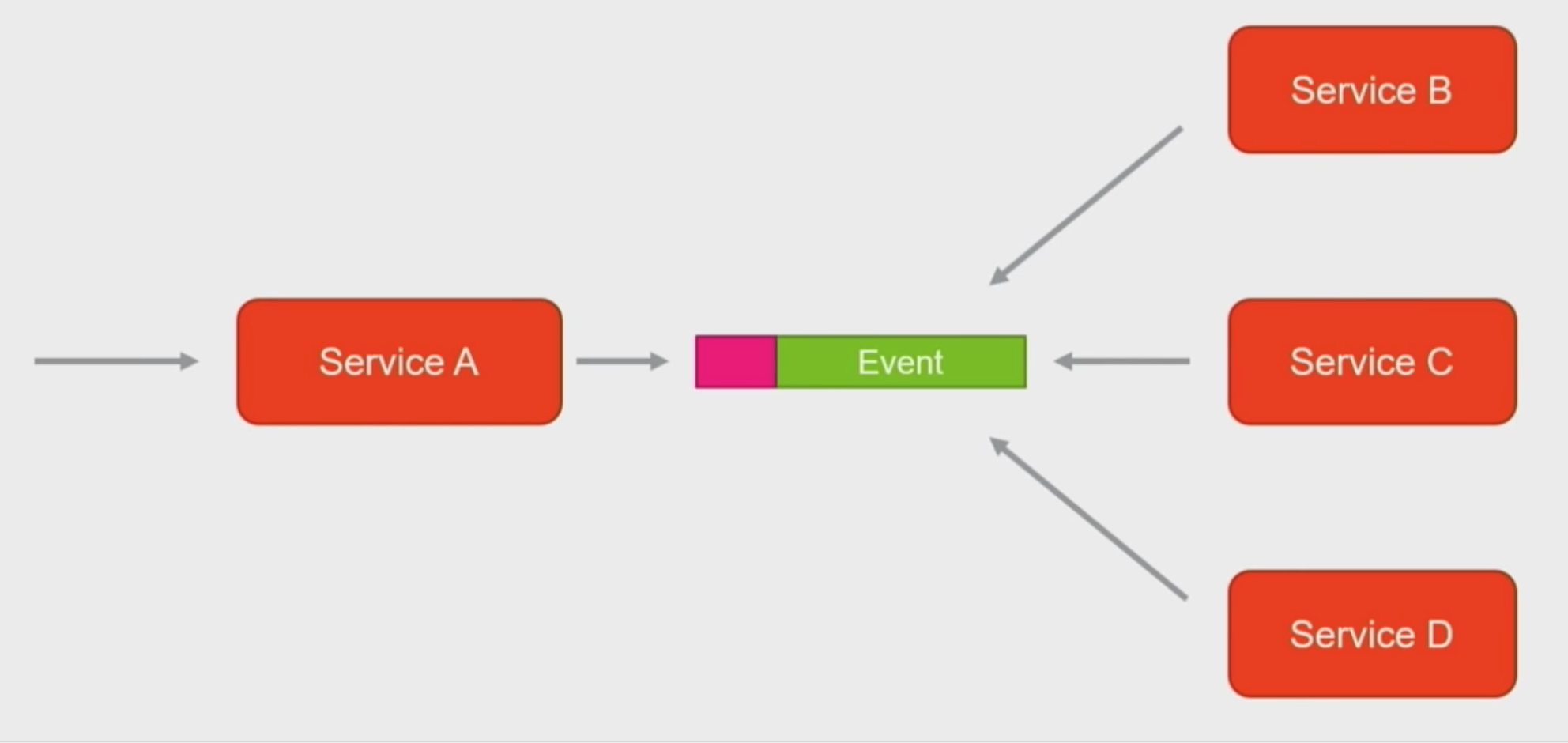
 “if all you have is a hammer, everything looks like a nail”
“if all you have is a hammer, everything looks like a nail”
event patterns
 event notification: “something changed”
event-carried state transfer: “this changed”
event sourcing: everything becomes an event
event notification: “something changed”
event-carried state transfer: “this changed”
event sourcing: everything becomes an event
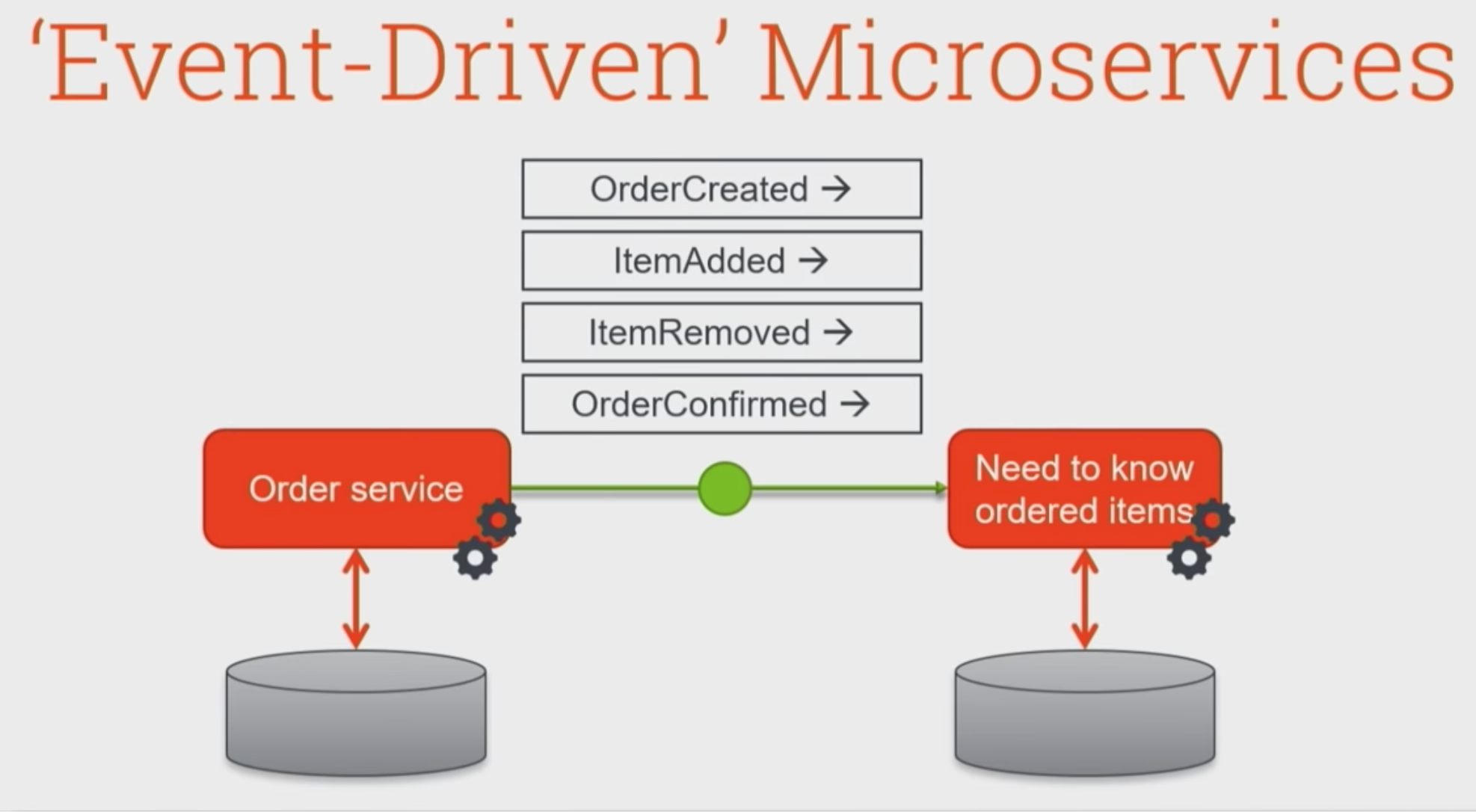 duplicate logic
item is ordered if added, not removed, then ordered
duplicate logic
item is ordered if added, not removed, then ordered
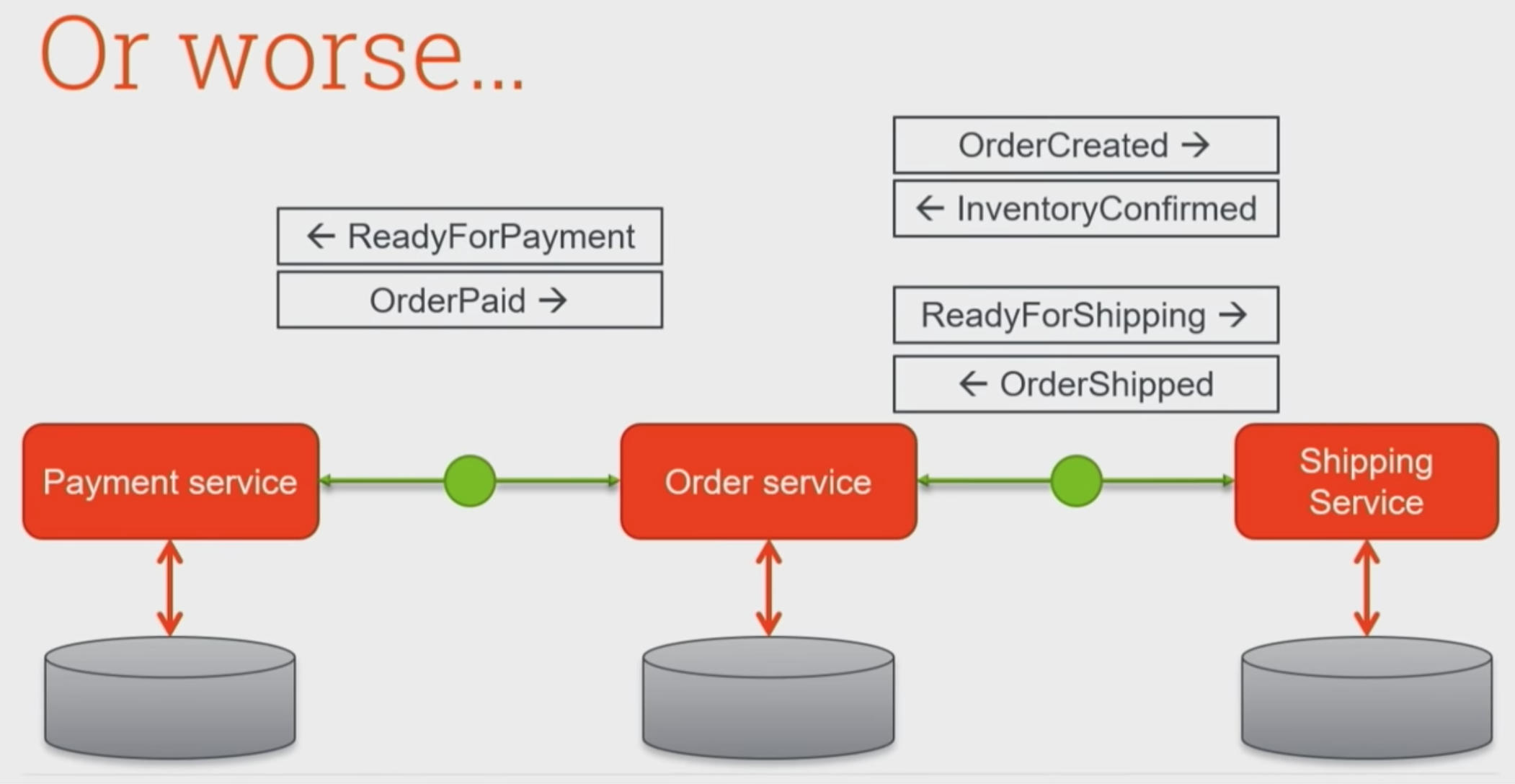
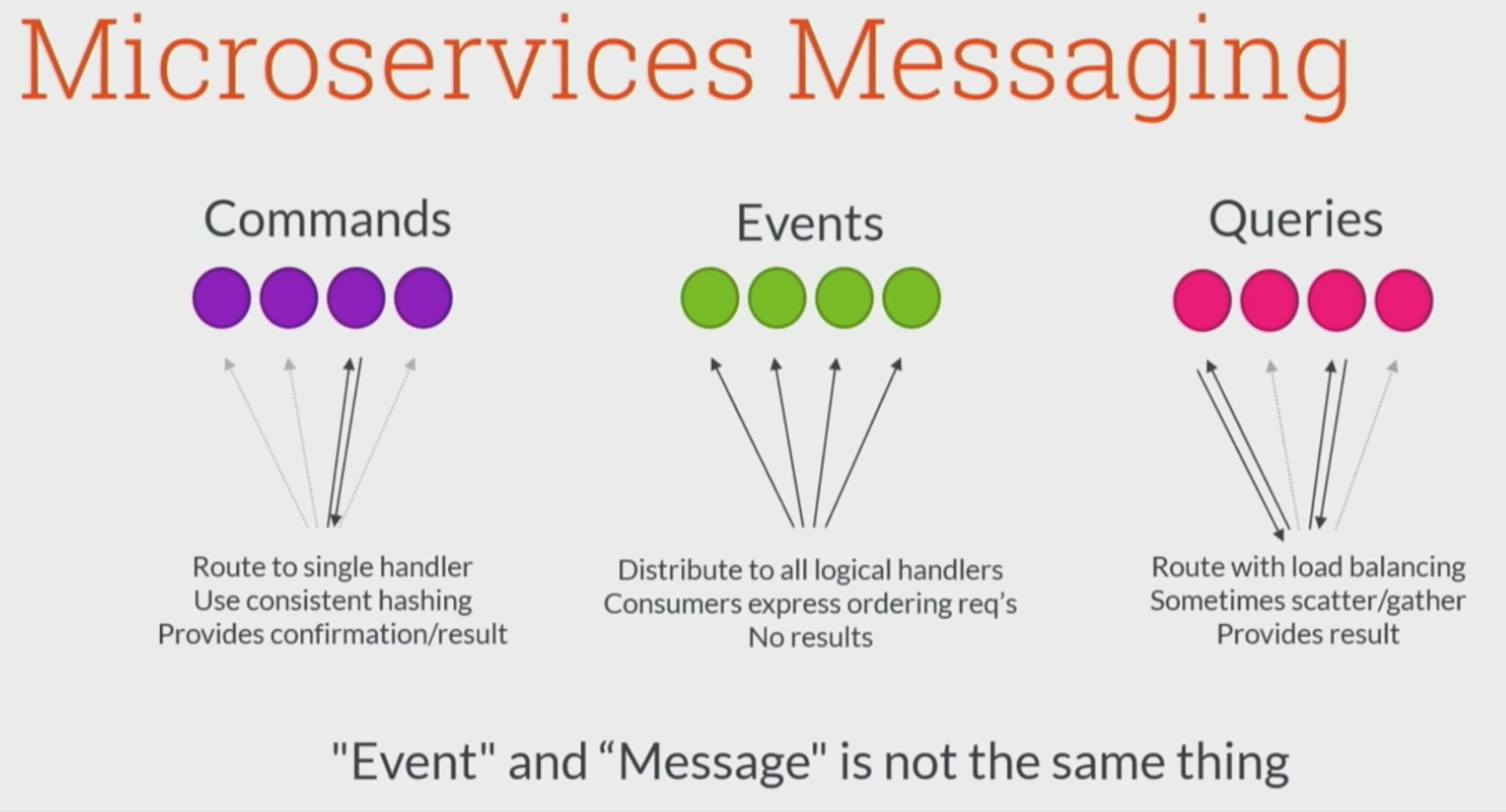 event: explain something happened
command: intent to change something
queries: need for information
event: explain something happened
command: intent to change something
queries: need for information
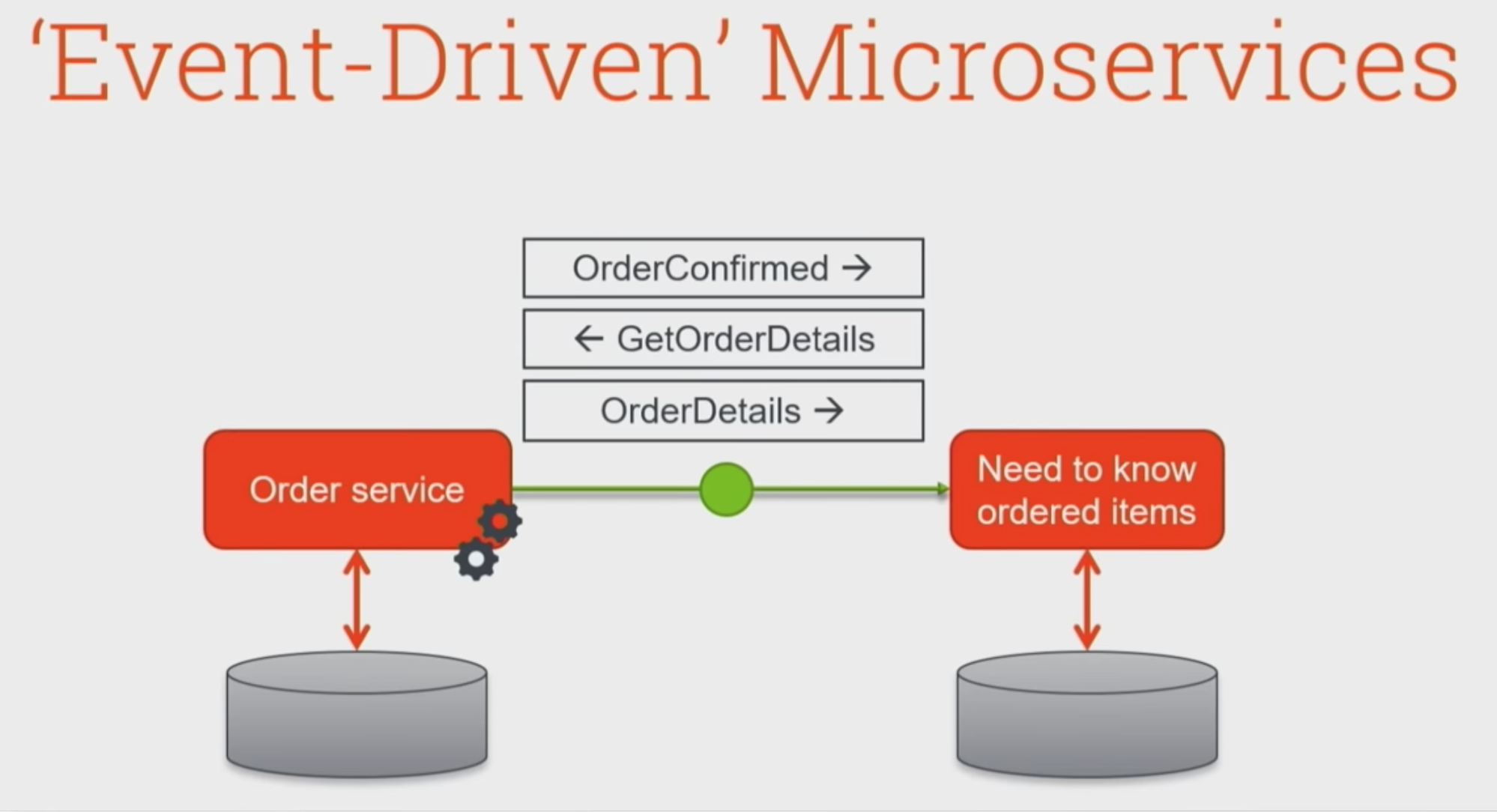 => event notification
=> event notification
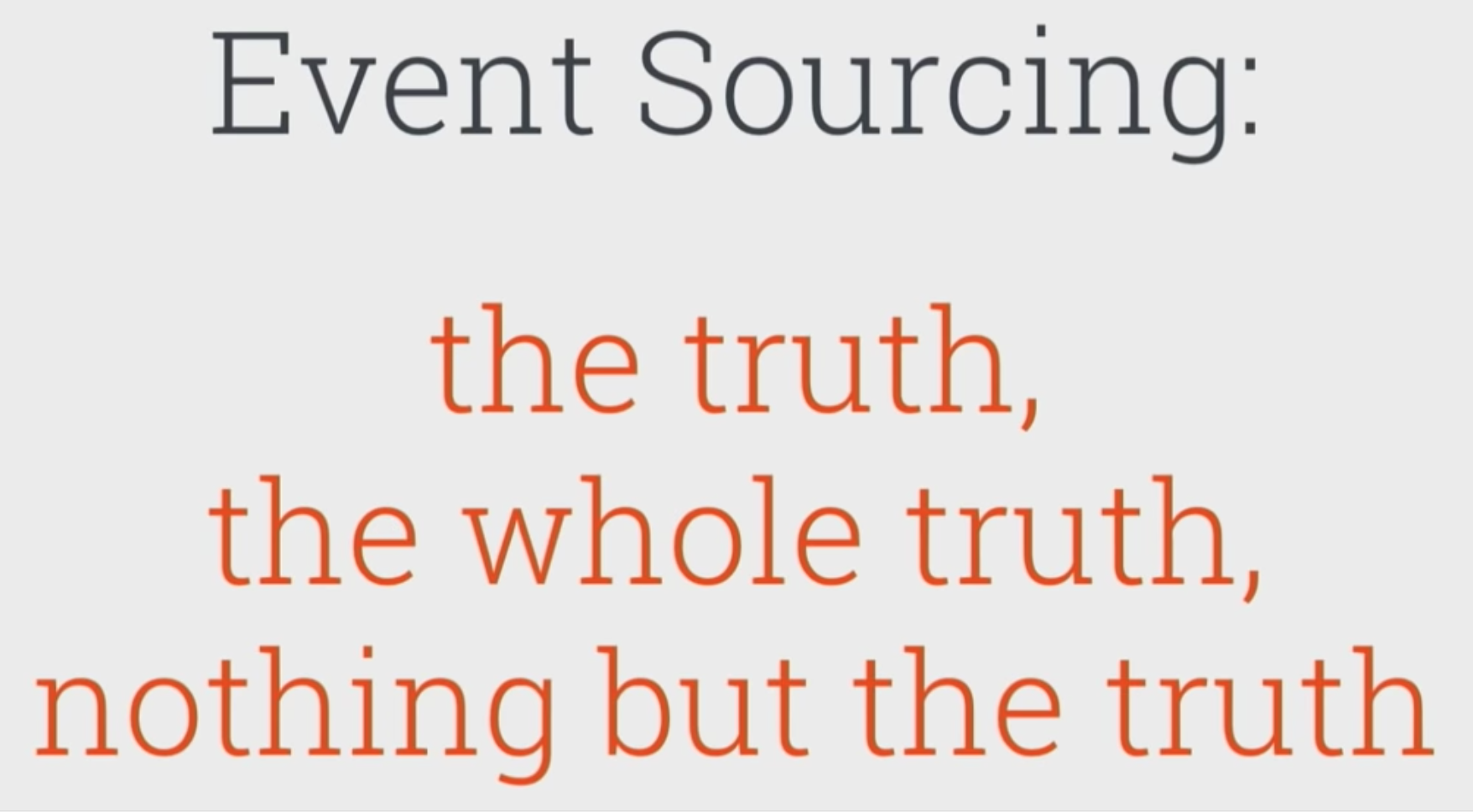 != just save all the events
!= just save all the events
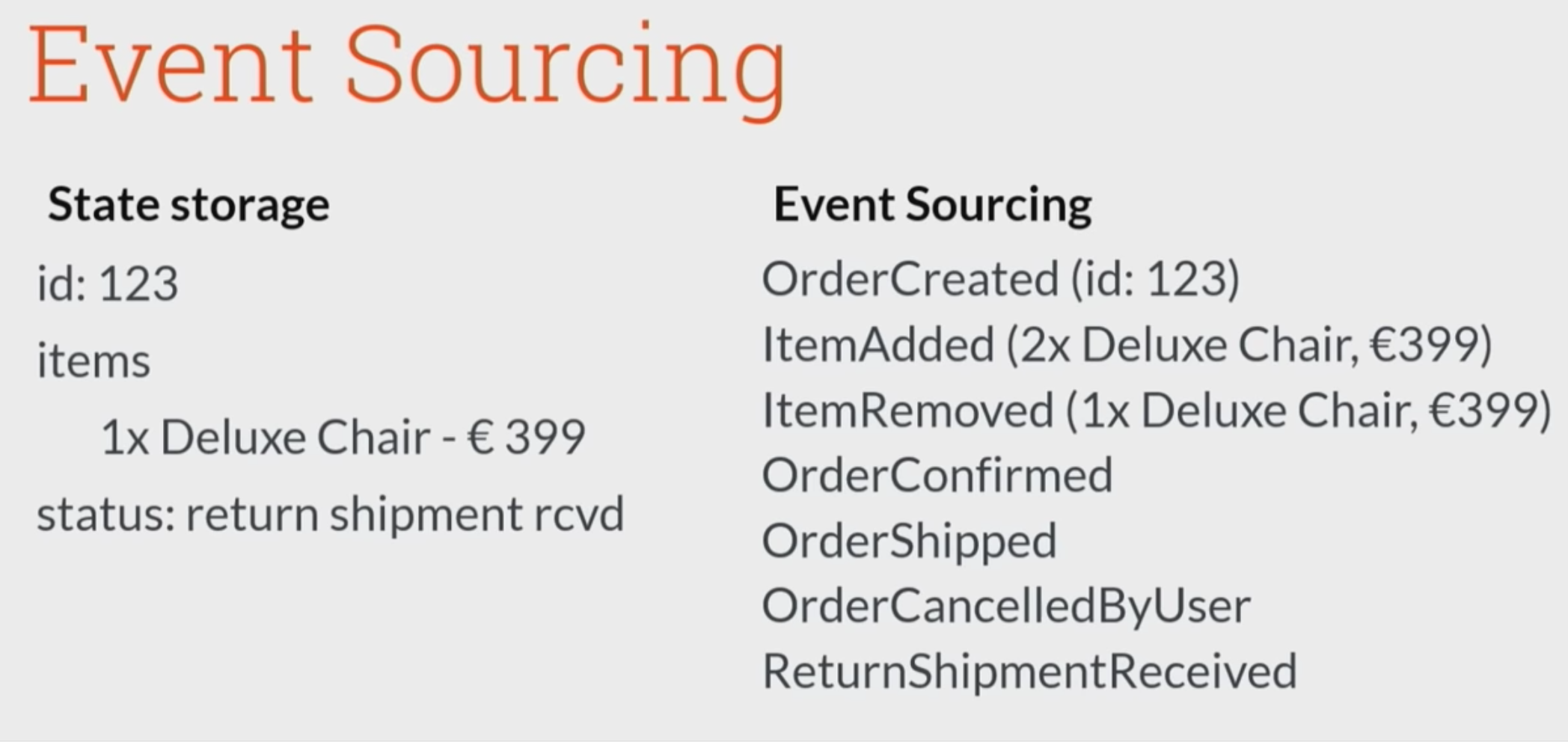
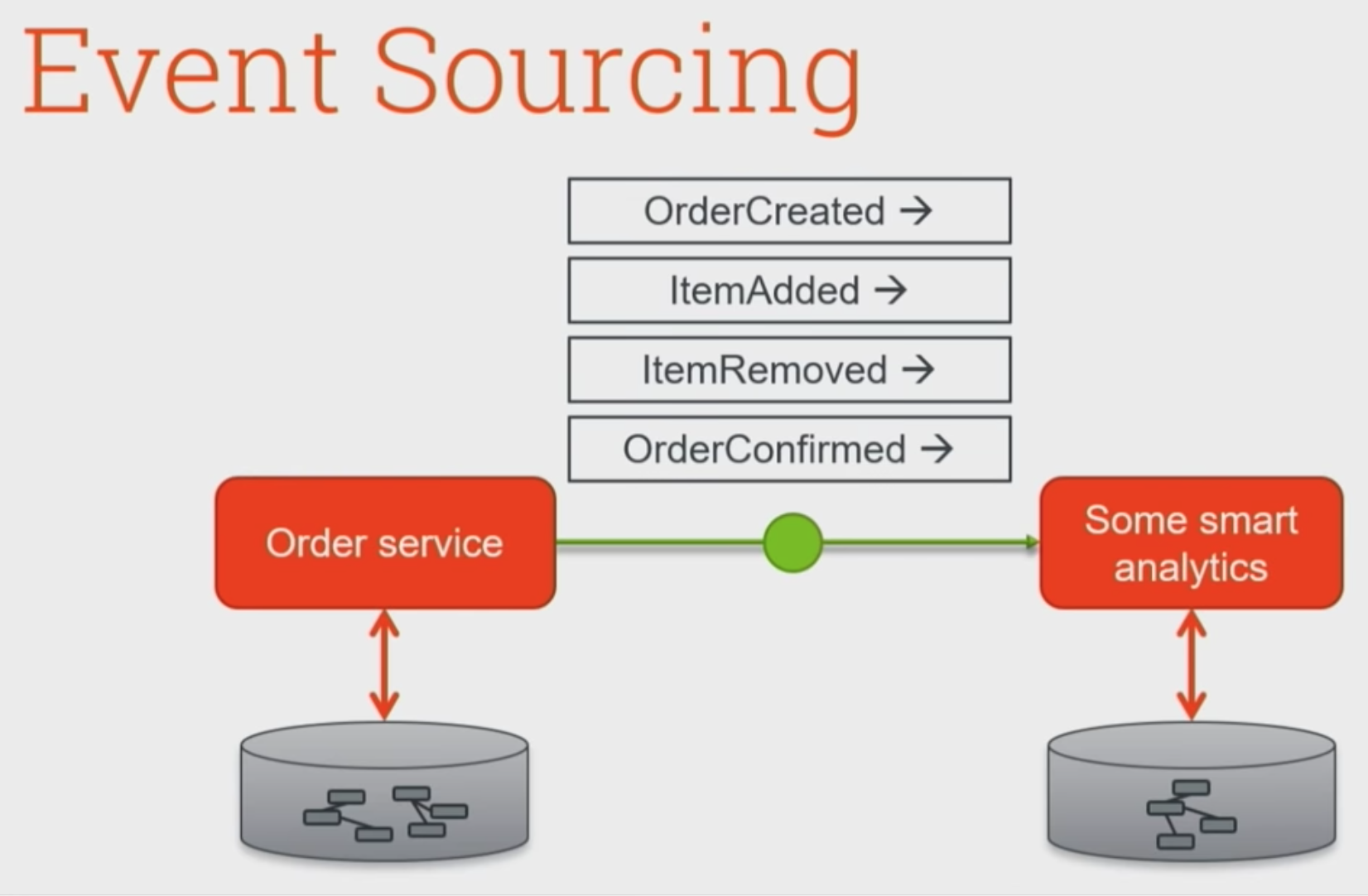 event handling
event handling
Event sourcing check: throw away everything, except your eventstore
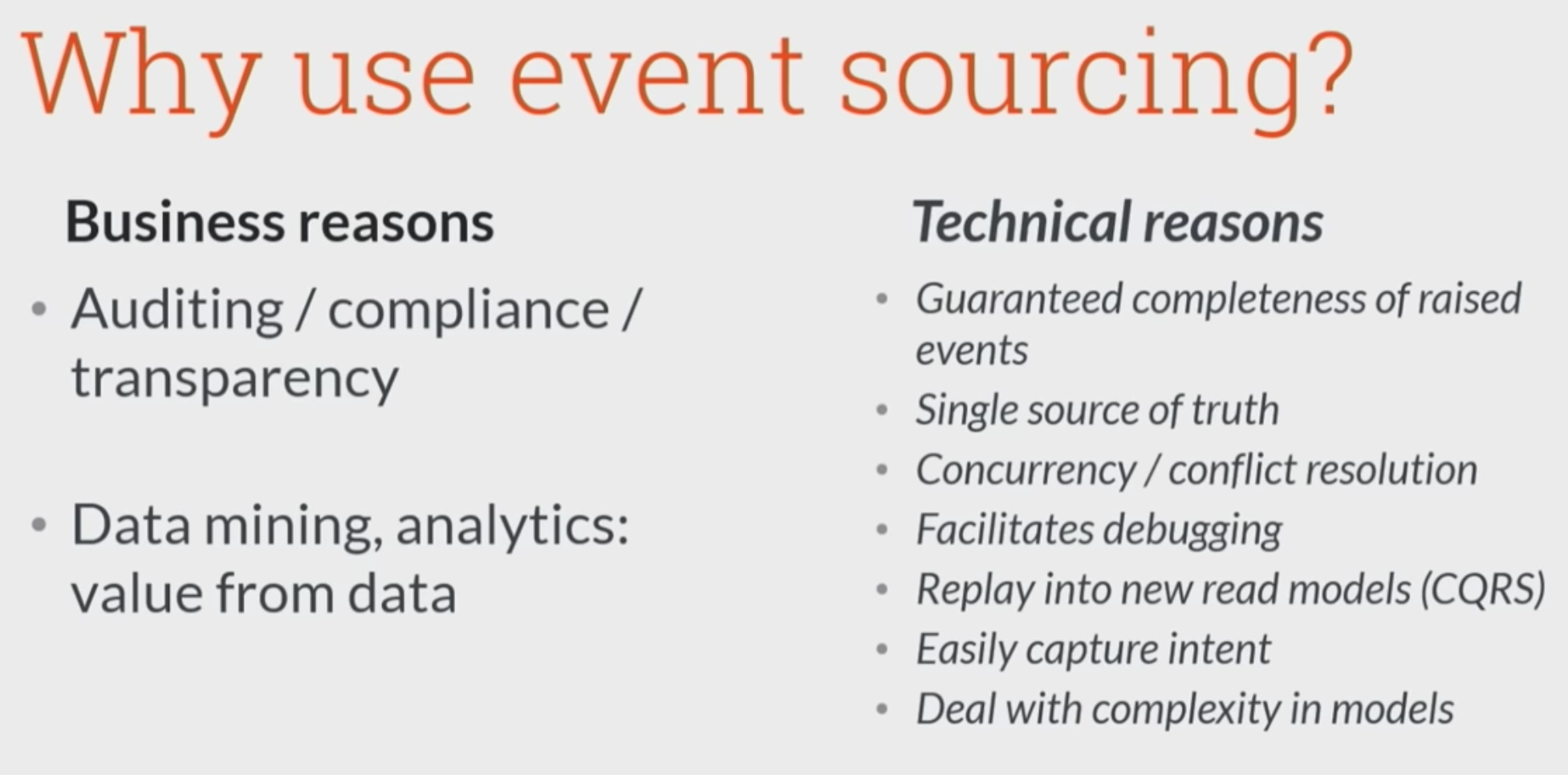
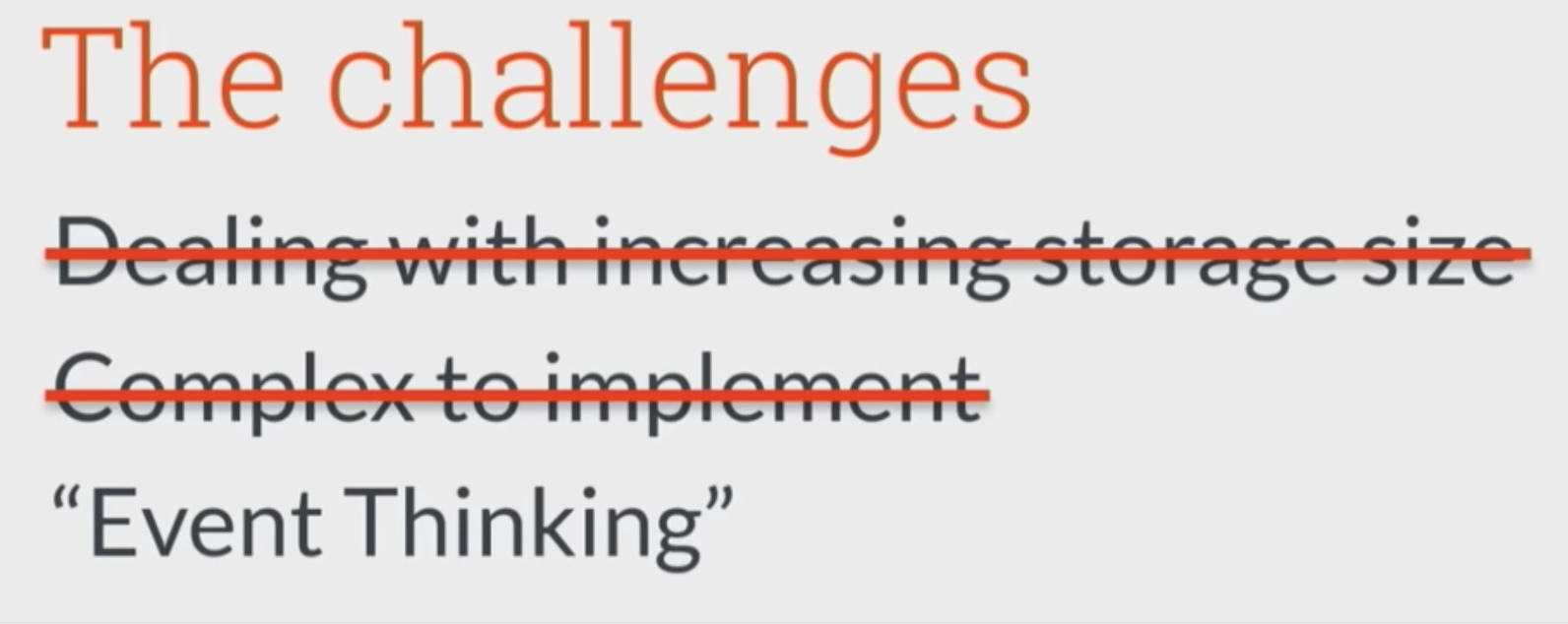 storage is cheap
everything is complex at first
forget about state, think about behavior
storage is cheap
everything is complex at first
forget about state, think about behavior
 “if all you have is a hammer, everything looks like a nail”
“if all you have is a hammer, everything looks like a nail”
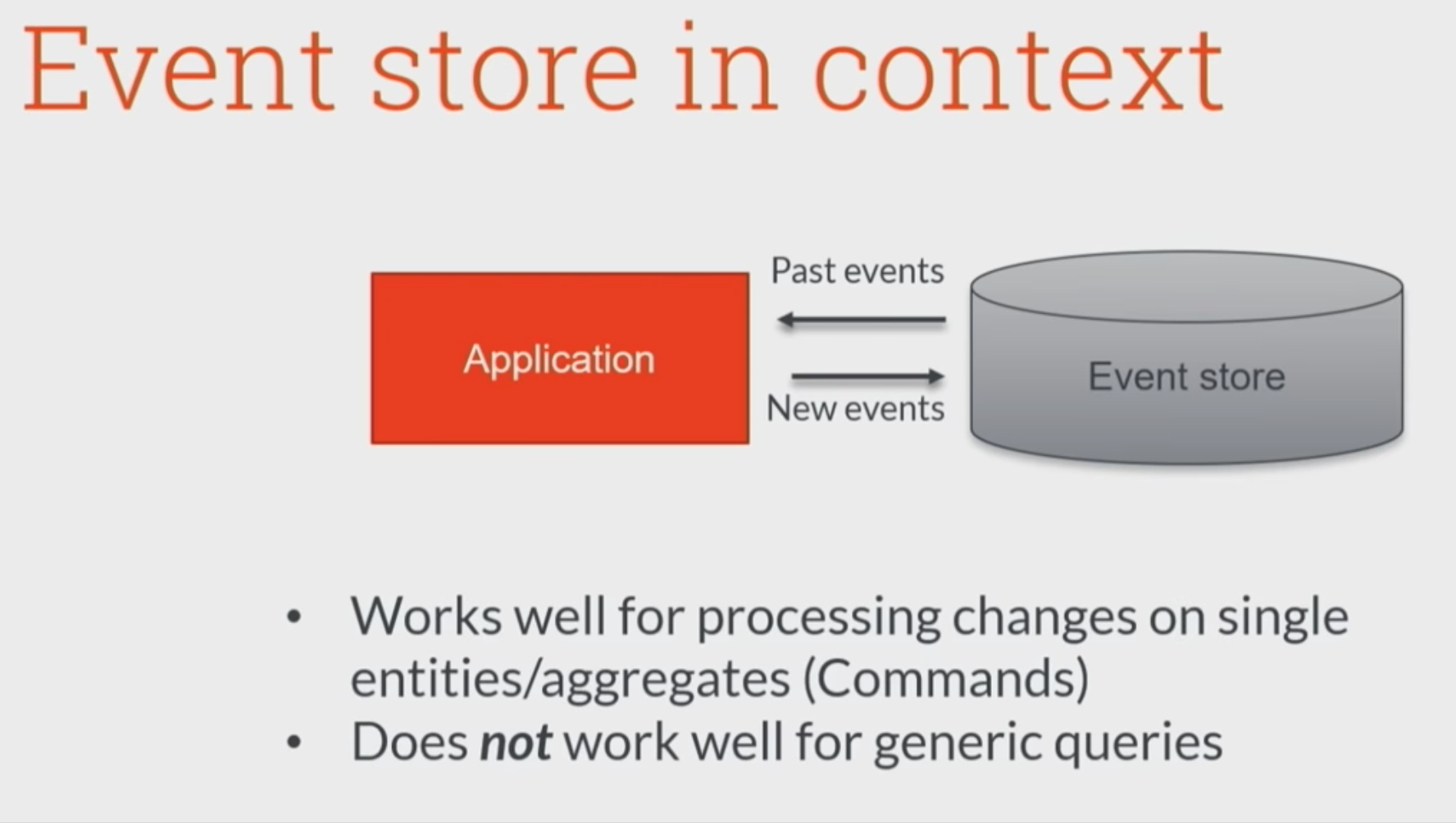 :) can I do this one change?
:( “give me all orders above 100$”
:) can I do this one change?
:( “give me all orders above 100$”
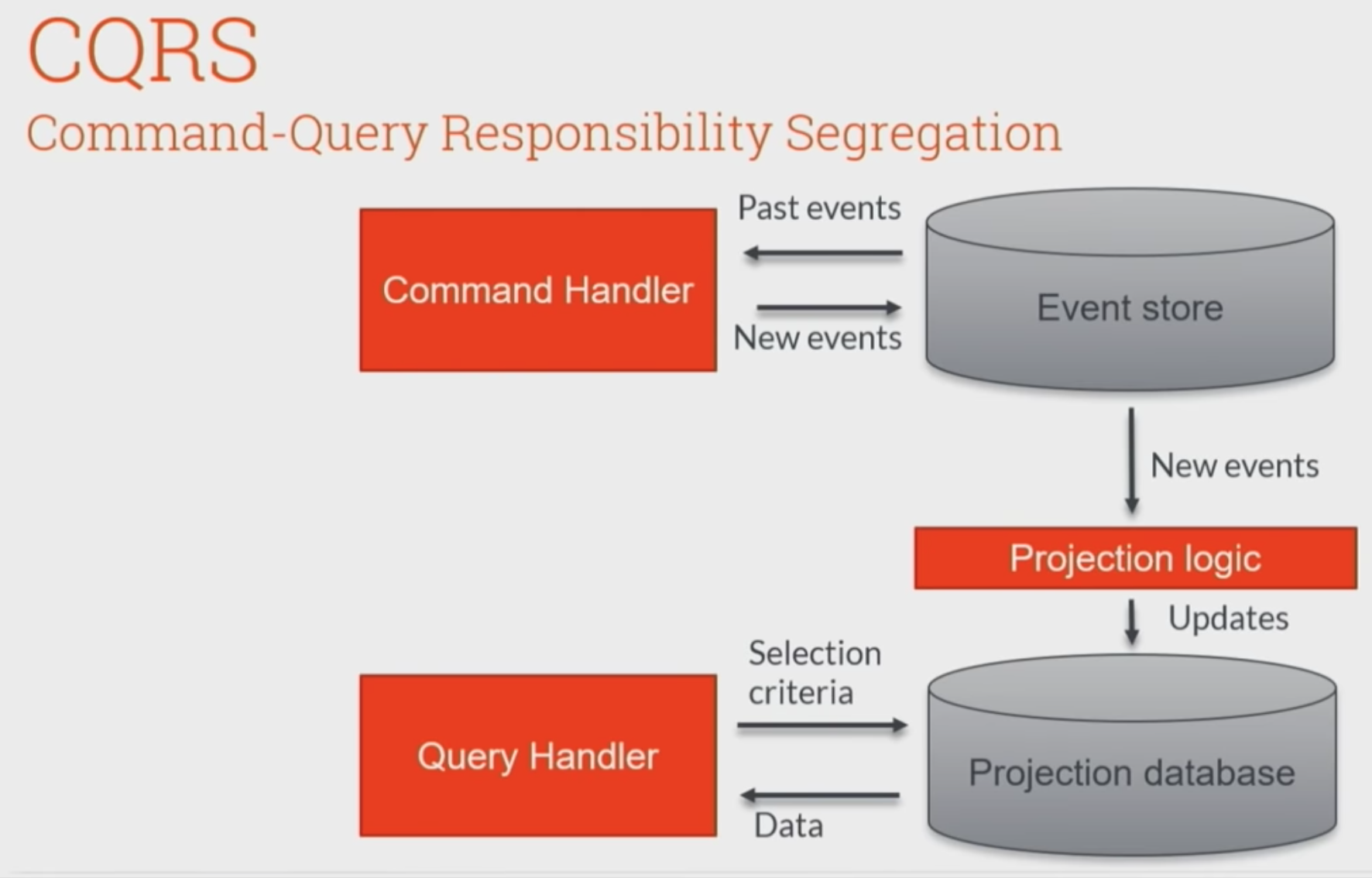 :) can I do this one change?
:) “give me all orders above 100$”
:) can I do this one change?
:) “give me all orders above 100$”
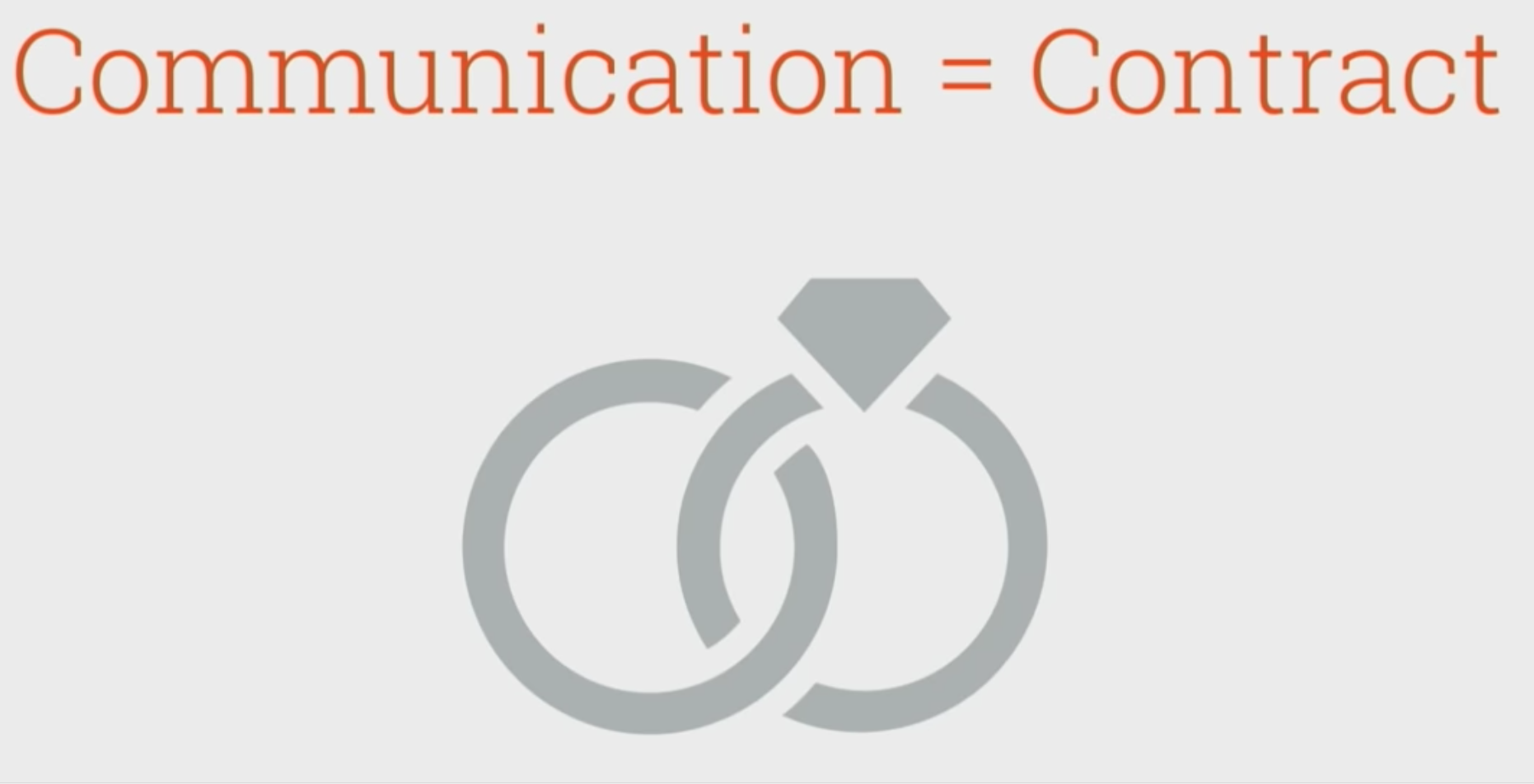 events -> contracts with unknown services
events -> contracts with unknown services
consumer driven contracts
 within context, want details
across borders, high level
within context, want details
across borders, high level
assign services to bounded context
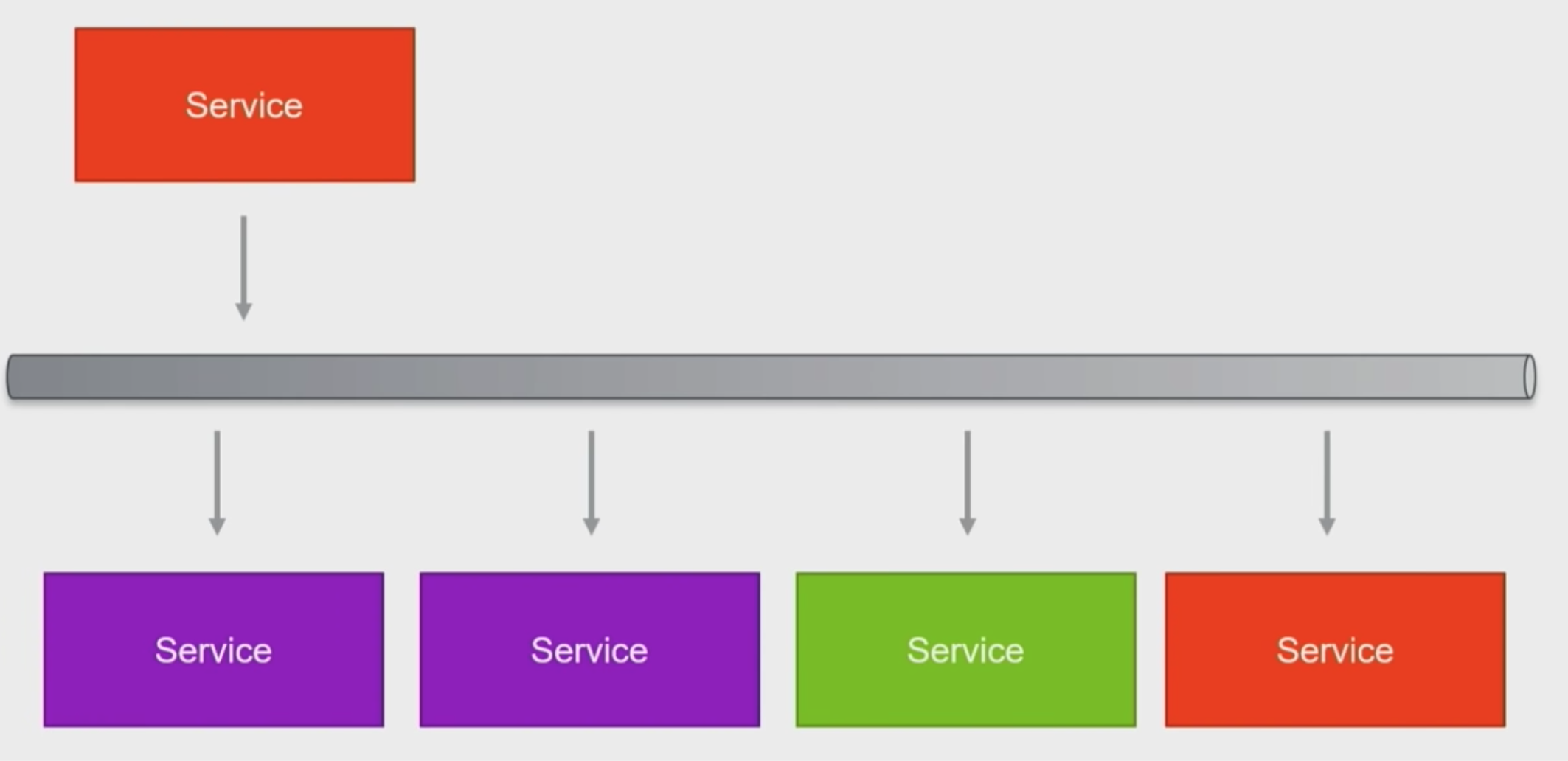
anti corruption layer
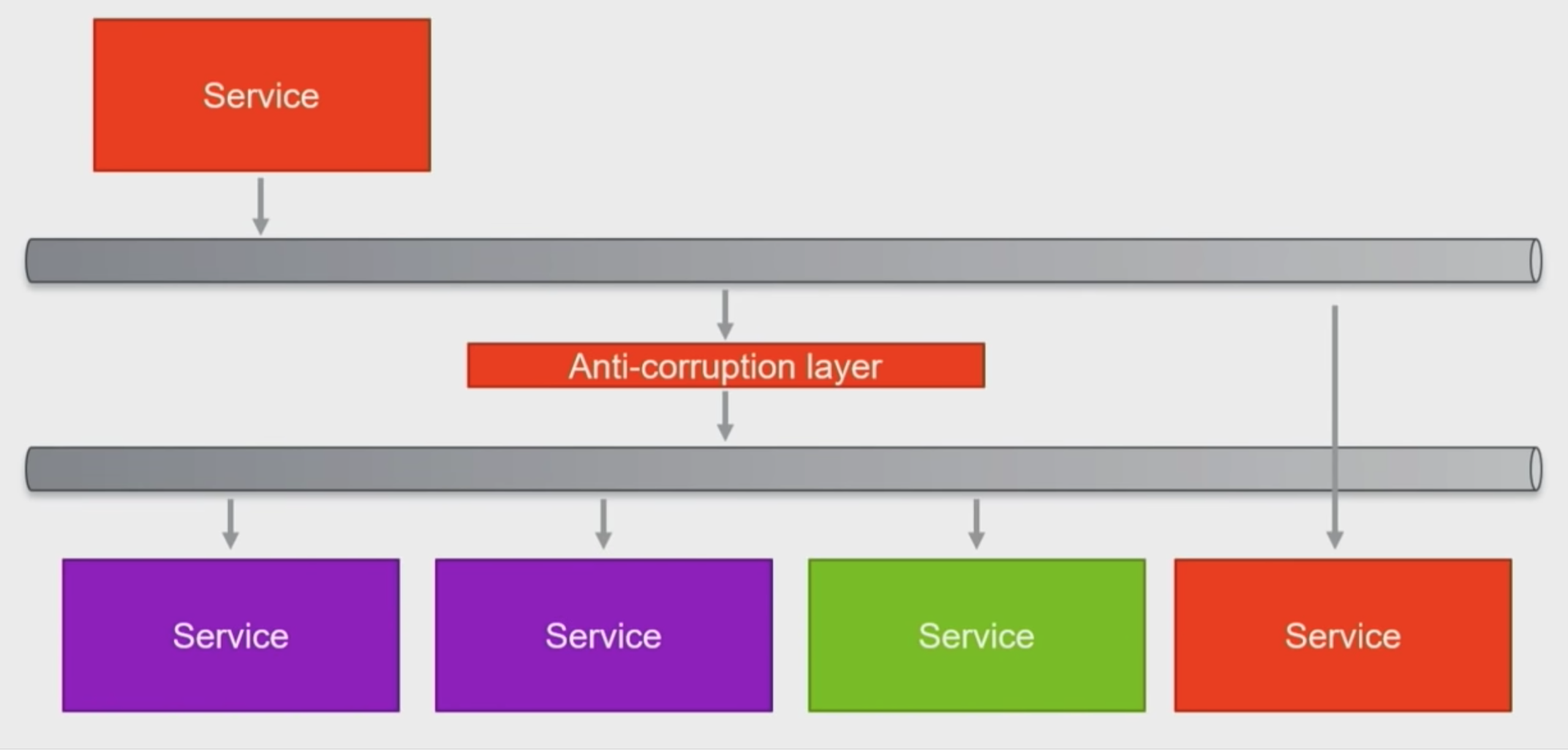
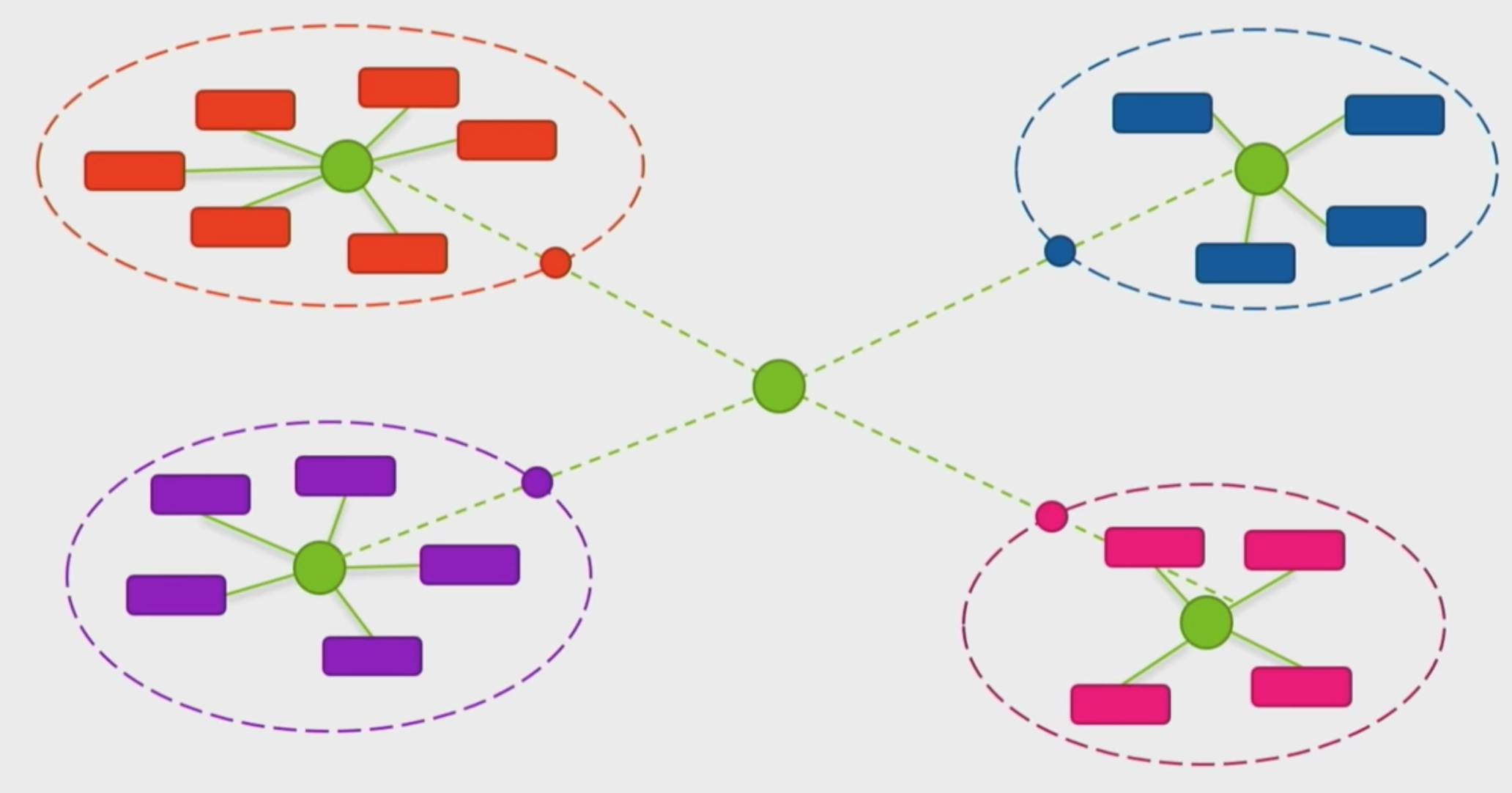
 use them as explicitly as events
use them as explicitly as events

 monolith first
disciplined modules
split off services
monolith first
disciplined modules
split off services